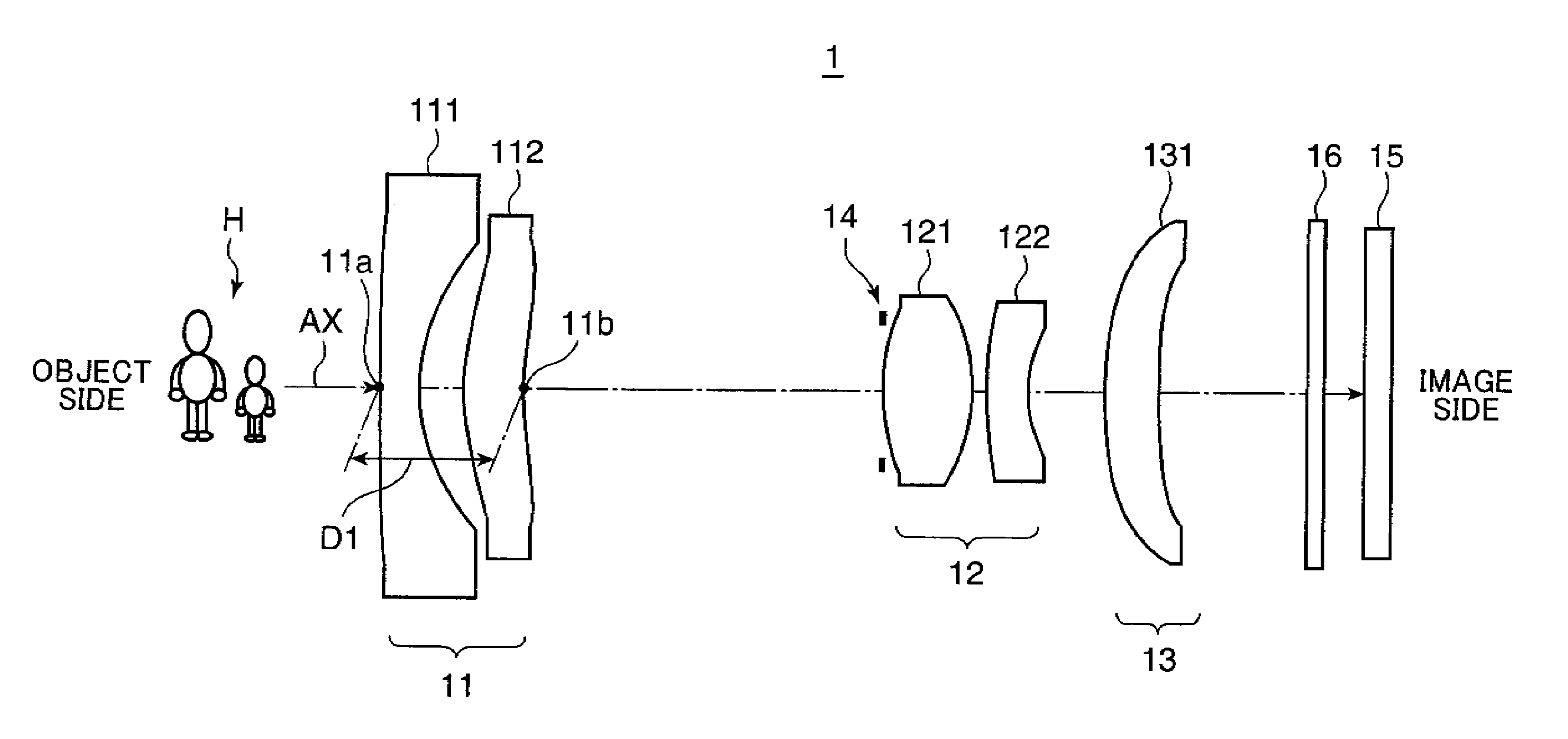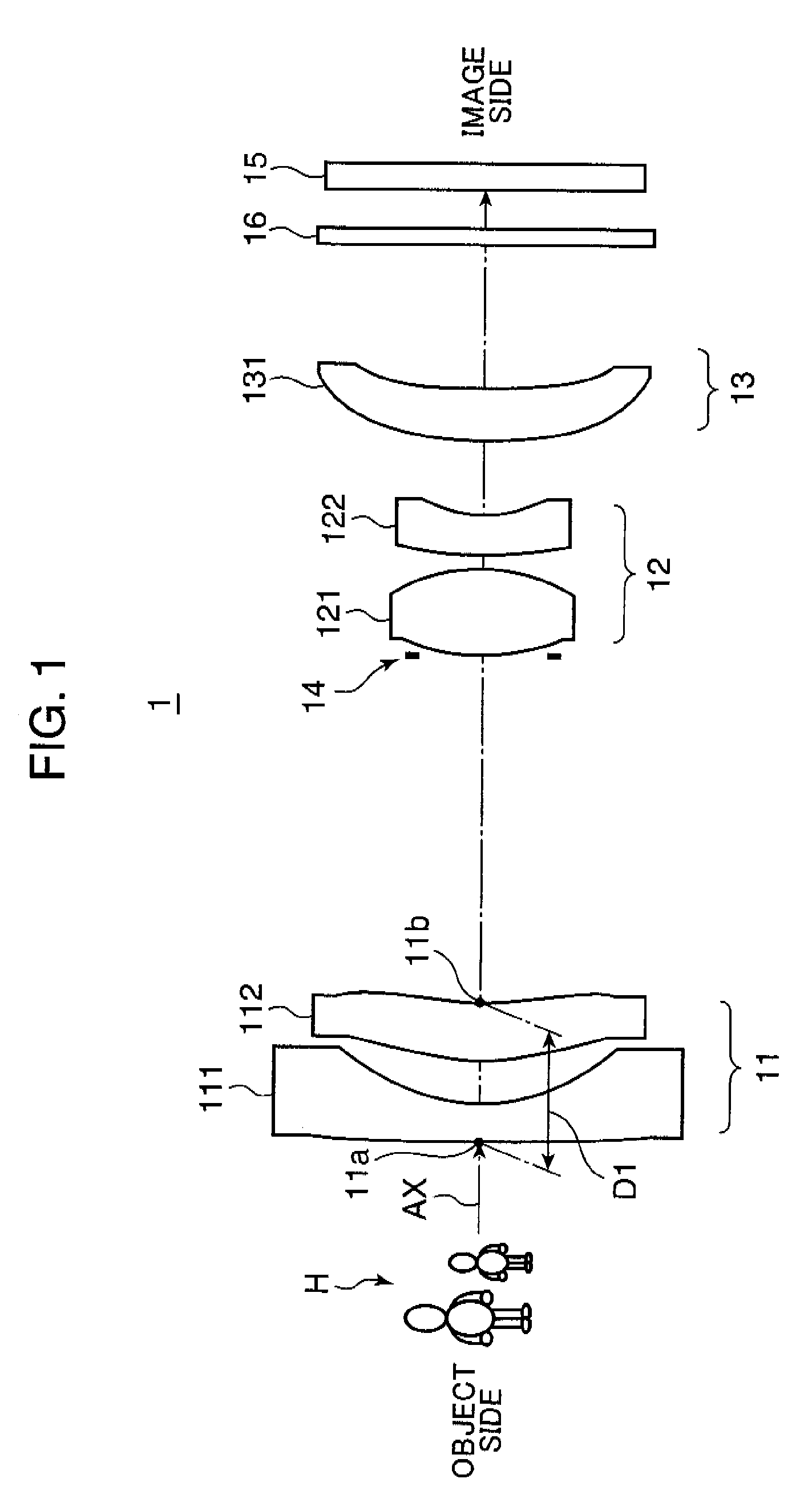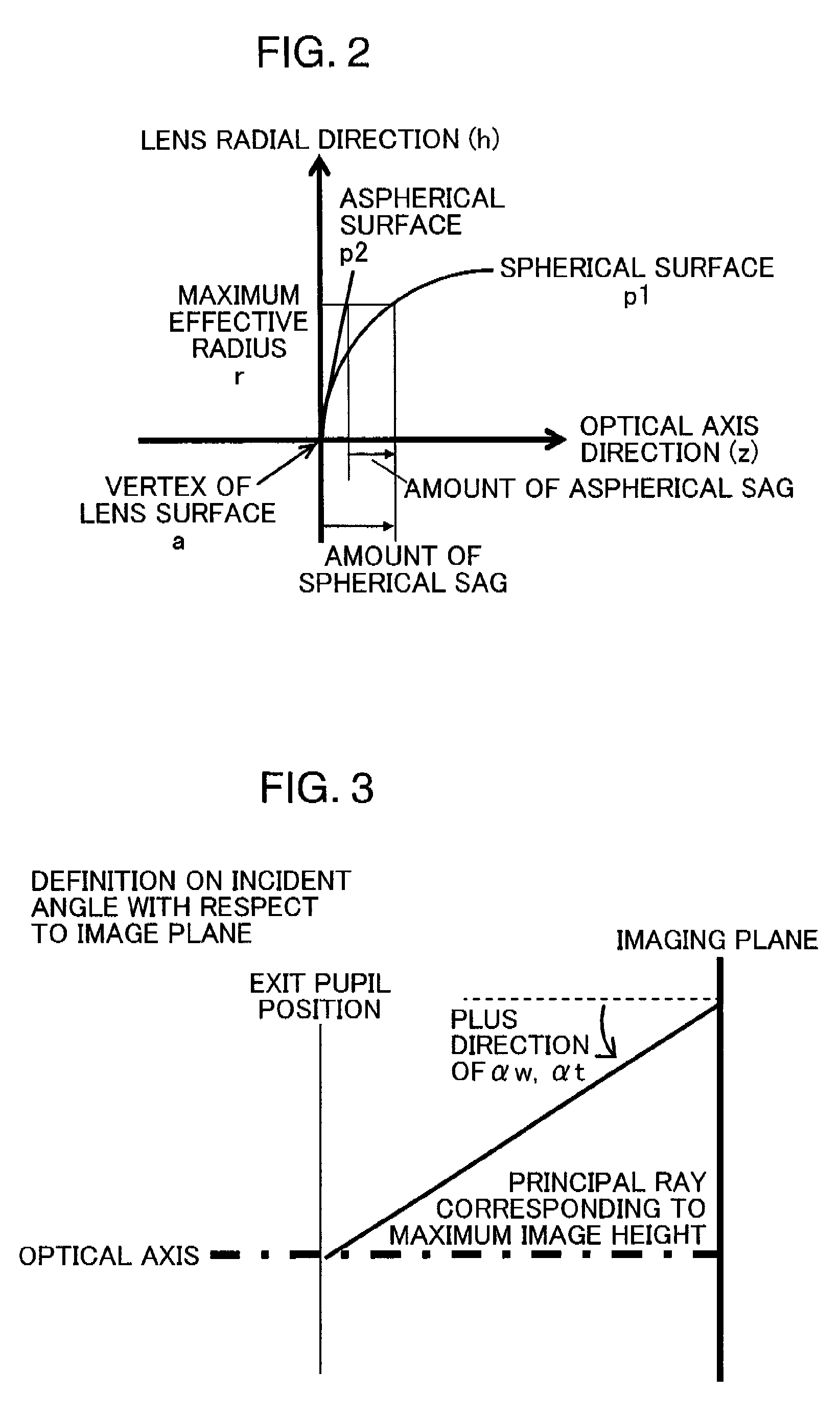Variable power optical system, imaging lens device and digital apparatus
a technology of optical system and lens device, applied in the field of zoom optical system, can solve the problems of increasing production cost, limited object to be photographed, and difficulty in molding the image-side lens surface, and achieve the effect of less difficulty, sufficient miniaturization, and same skill level
- Summary
- Abstract
- Description
- Claims
- Application Information
AI Technical Summary
Benefits of technology
Problems solved by technology
Method used
Image
Examples
example 1
[0160]FIG. 6 is a cross-sectional view (i.e. an optical path diagram), taken along the optical axis (AX), showing an arrangement of lens groups in a zoom optical system 1A in Example 1. The optical path diagrams in FIG. 6, and FIGS. 7 through 13 to be described later each shows a lens arrangement at the wide angle end (W). Throughout Example 1, and Examples 2 through 8 to be described later, the lens groups include, in this order from the object side in the drawings (i.e. from the left side in FIG. 6), a first lens group (Gr1) having a negative optical power as a whole, a second lens group (Gr2) having a positive optical power, and a third lens group (Gr3) having a positive or negative optical power, except for Example 8. In other words, the lens arrangement is a negative dominant arrangement, in which the first lens group (Gr1) closest to the object side has a negative optical power.
[0161]The zoom optical system 1A in Example 1 shown in FIG. 6 has the following lens arrangement in ...
example 2
[0181]FIG. 7 is a cross-sectional view, taken along the optical axis (AX), showing an arrangement of lens groups in a zoom optical system 1B in Example 2. The zoom optical system 1B in Example 2 includes, in the order from the object side, a first lens group (Gr1) having a negative optical power as a whole, an aperture stop (ST), a second lens group (Gr2) having a positive optical power as a whole, and a third lens group (Gr3) having a positive optical power. More specifically, the first lens group (Gr1) is constituted of a biconcave negative lens element (L1) and a positive meniscus lens element (L2) convex to the object side in this order from the object side. The second lens group (Gr2) is constituted of a biconvex positive lens element (L3) and a negative meniscus lens element (L4) convex to the object side in this order from the object side. The third lens group (Gr3) is constituted of a positive meniscus lens element (L5) convex to the object side.
[0182]In the zoom optical sys...
example 3
[0186]FIG. 8 is a cross-sectional view, taken along the optical axis (AX), showing an arrangement of lens groups in a zoom optical system 1C in Example 3. The zoom optical system 1C in Example 3 includes, in the order from the object side, a first lens group (Gr1) having a negative optical power as a whole, an aperture stop (ST) arranged on the object side of a second lens group (Gr2), the second lens group (Gr2) having a positive optical power as a whole, and a third lens group (Gr3) having a positive optical power. More specifically, the first lens group (Gr1) is constituted of a biconcave negative lens element (L1) and a positive meniscus lens element (L2) convex to the object side in this order from the object side. The second lens group (Gr2) is constituted of a biconvex positive lens element (L3) and a negative meniscus lens element (L4) convex to the object side in this order from the object side. The third lens group (Gr3) is constituted of a positive meniscus lens element (...
PUM
 Login to View More
Login to View More Abstract
Description
Claims
Application Information
 Login to View More
Login to View More - R&D
- Intellectual Property
- Life Sciences
- Materials
- Tech Scout
- Unparalleled Data Quality
- Higher Quality Content
- 60% Fewer Hallucinations
Browse by: Latest US Patents, China's latest patents, Technical Efficacy Thesaurus, Application Domain, Technology Topic, Popular Technical Reports.
© 2025 PatSnap. All rights reserved.Legal|Privacy policy|Modern Slavery Act Transparency Statement|Sitemap|About US| Contact US: help@patsnap.com



